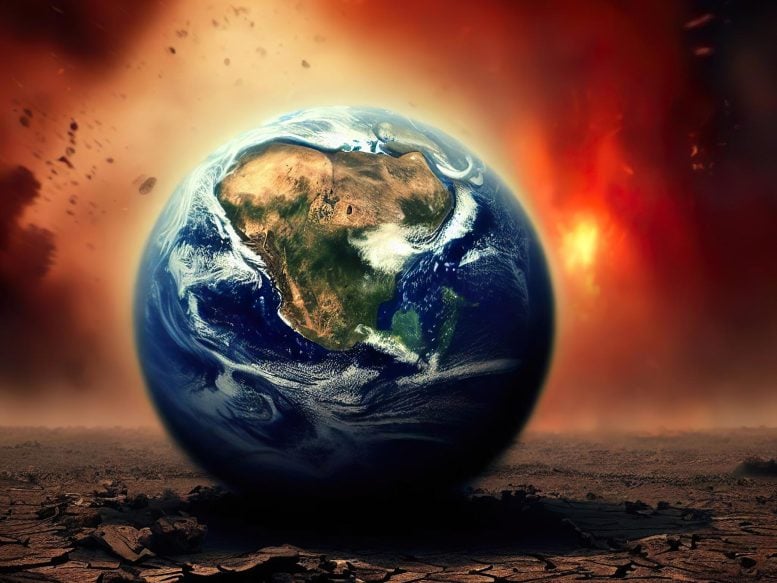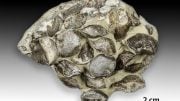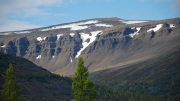
Contrary to the long-held belief that the Late Ordovician mass extinction event (LOME), which occurred 443 million years ago and eliminated about 85% of all species, was primarily caused by a short-lived ice age, a new study suggests that global warming also played a significant role.
The Late Ordovician mass extinction event (LOME) has long been viewed as odd compared to other mass extinction events in Earth’s history. Contrary to nearly all other major extinction phases known from the fossil record it appears to be instigated by an ice age. A new study, however, shows that the LOME was probably governed by mechanisms like those seen during most other events – including global warming.
Textbooks written during the last 50 years will tell you that 443 million years ago upwards of 85% of all species disappeared towards the end of the Ordovician Period because of a short-lived ice age in what is known as the oldest and probably second most severe mass extinction event in all of Earth’s history. However, a new study just published in Trends in Ecology and Evolution by researchers of the universities of Copenhagen, Ghent, and California-Berkeley questions this long-standing view because – as the study points out – the massive loss of biodiversity started millions of years earlier than hitherto believed during a warming phase that preceded the well-known glacially associated extinction pulses.
The LOME has long been a bit of a conundrum. Strangely two mass extinction pulses seem associated with the waxing and waning of major ice sheets. This is unique as all other extinction events of similar scale later in the fossil record appear to be associated with global warming – a scenario which is also like that observed during the current biodiversity loss. The new study points out that new, temporally better-resolved fossil biodiversity data through the LOME-event show the extinctions to occur in at least three pules during an up to nine million yearlong interval. This fundamentally changes the Late Ordovician extinction scenario and thus likely also the drivers behind it.
Did volcanoes instigate the Ordovician biodiversity loss?
Within the Earth Sciences community, many hypotheses circulate as to what drove the event. These disagreements are also reflected within the author group of the paper. However, the authors do agree that the classic hypothesis now is outdated and in need of revision. One revised scenario, for instance, suggests the LOME to be associated with some of the largest volcanic eruptions ever recorded in Earth’s history. All evidence points to a much more complex climate history at play during the LOME than previously recognized. And, that extinction triggers could well have been global warming induced by greenhouse gas overloading through volcanic outgassing, as well as deoxygenation of the oceans. Whereas some of this had already been explored for the classic ice age interval, this has not been studied in any detail during this new first wave of the LOME extinctions.
Analogs to the Anthropocene?
Today anthropogenic activities have led to a major loss of biodiversity through first and foremost CO2 overloading of the atmosphere, causing global warming and acidification of global oceans, and habitat loss through overexploitation of natural resources.
The current biodiversity loss occurs at concerning speeds, likely far outpacing most major extinction events known from the fossil record. So, although perhaps still not at the scale of past mass extinctions, the current rates of extinctions are certainly alarming. The new study highlights these differences in extinction rates, arguing that the LOME exhibits some of the same extinction drivers as seen today albeit naturally induced and thus apparently operating at slower temporal scales than the current human-induced biodiversity crisis. However, fossil biodiversity data through extinction events becomes increasingly better temporally resolved and with that, some concerning new evidence is emerging.
Are we currently facing a prolonged biodiversity crisis?
The better-resolved data shows that even though these naturally induced extinctions known from the fossil record may be nested in prolonged million-year phases of biodiversity decline, they are punctuated by sudden, catastrophic extinction pulses of just a few millennia in duration. This new evidence from the fossil record may be an indication that once biodiversity loss accelerates, ecosystems fall out of balance, causing much greater and irreversible disruption. This has a concerning resemblance to what is seen during the past few centuries – not least if this means that we are facing a prolonged, irreversible loss of biodiversity similar to what has occurred previously in Earth’s history.
Reference: “Was the Late Ordovician mass extinction truly exceptional?” by Christian M.Ø. Rasmussen, Thijs R.A. Vandenbroucke, David Nogues-Bravo and Seth Finnegan, 12 May 2023, Trends in Ecology and Evolution.
DOI: 10.1016/j.tree.2023.04.009









“… the massive loss of biodiversity started millions of years earlier than hitherto believed during a warming phase that preceded the well-known glacially associated extinction pulses.”
Warming, in and of itself, is probably not that dangerous. David Attenborough has remarked on his TV series that while the tropics only constitute about 1% of the land surface of Earth, 50% of all species are found in the Tropics. There appears to be feedback loops that keep ocean surface temperatures to a maximum of about 30 deg C, no matter how hot the air over land gets. Something that this SciTechDaily article doesn’t make obvious is that the concern is about marine life, things like the brachiopod invertebrate. I think that another explanation other than warming needs to be looked for. What role might have plate tectonics played in this scenario? [See reference 17 in the published article.]
“Today anthropogenic activities have led to a major loss of biodiversity through first and foremost CO2 overloading of the atmosphere, causing global warming and acidification of global oceans, …”
It is a stretch to call the current CO2 concentration of about 420 PPM (MLO) “overloading” when past concentrations were 10X that. Furthermore, this is a good example of why the pejorative phrase “ocean acidification” is a poor choice of words. It is ambiguous and doesn’t make it clear whether there is just a slight lowering of pH, while maintaining a basic/alkaline pH range — as is happening today — or if, during the End Devonian, the oceans actually became acidic with a pH lower than 7. The latter is possible given the acknowledged volcanic activity, as there were probably strong acids like sulfuric, hydrochloric, and nitric acting to acidify the oceans, not just the weak, buffered carbonic acid that is the dominant agent today.
I think that these authors are trying too hard to associate current anthropogenic changes with a previous mass extinction that has no shortage of potential causes.
The second to the last paragraph should contain the modified sentence:
“It is ambiguous and doesn’t make it clear whether there was just a slight lowering of pH, while maintaining a basic/alkaline pH range — as is happening today — or if, during the End Ordovician, the oceans actually became acidic, with a pH lower than 7.”
[I do wish there was an editing function.]